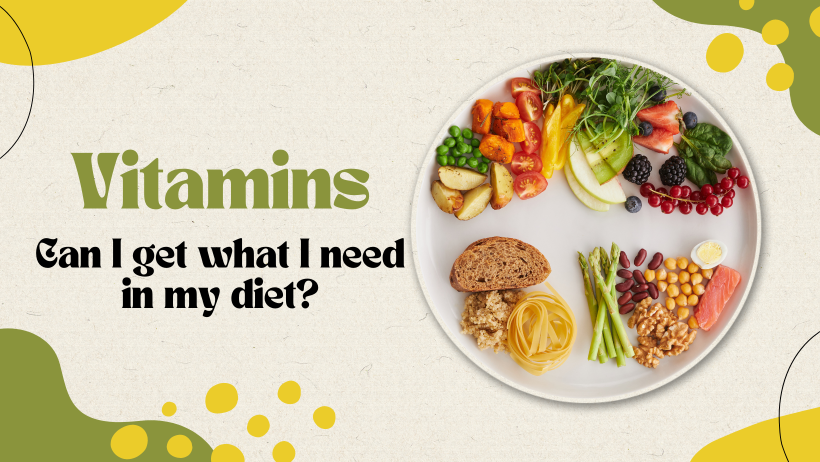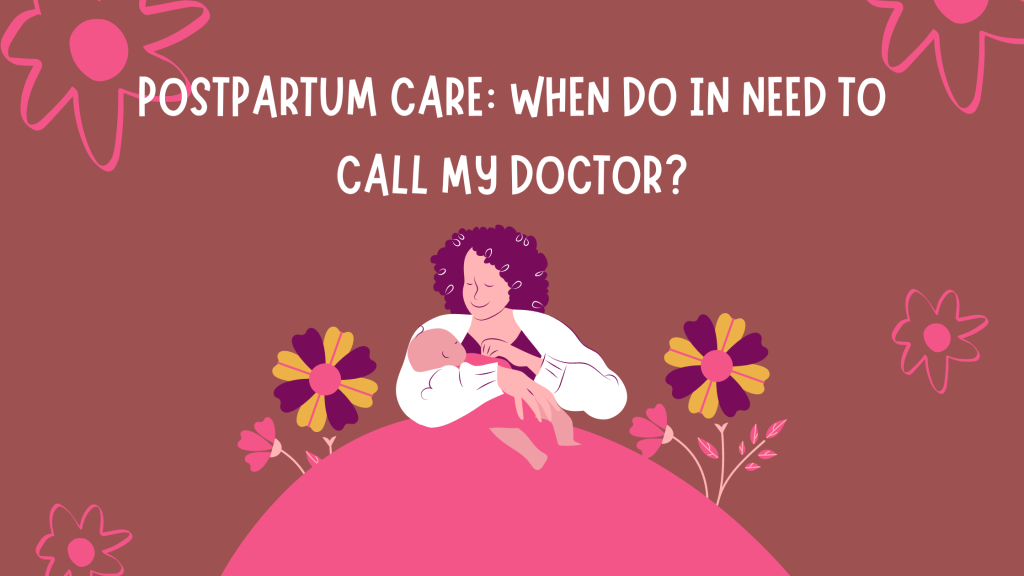Vitamins – Can I get what I need in my diet?
Posted on Monday, July 3rd, 2023 at 5:21 pm

Does the thought of figuring out what supplements you should take make you feel like you are lost in the jungle? Well, don’t worry! I will be your guide and share some highlights about these mysterious nutrients, as well as point out ways to include these in your diet. So, without further ado, let’s get to it!
What are vitamins?
Wikipedia defines vitamins as molecules that are necessary for the body to function properly.[1] Well, “How is this different from minerals and herbs,” you might ask? Vitamins are essential nutrients for the body that come from living things. They differ from minerals because although both are essential, minerals are found within the earth. Herbal products come from plants. But even though they come from living things, they are not necessarily essential for the body to function.[2]
How many essential vitamins are there?
There are 13 essential vitamins. They include Vitamins A, C, D, E and K, as well as seven different B vitamins. Let’s talk more about each of these essential vitamins.
Vitamin A
Vitamin A is important for your vision and immune system. It is also critical for most of the major organ systems in your body to function properly. Worried that you are not getting enough Vitamin A? Have no fear. It is felt that the average person gets enough Vitamin A in their diet, regardless of their dietary preferences or restrictions. Preformed Vitamin A, known as retinol, is typically found in meats, eggs and dairy products. However, beta-carotene, which is the most common precursor to Vitamin A, can be found in all sorts of fruits and vegetables. Do you like cantaloupe, apricots, and mangos? If you do, you’re in luck! These are good sources of Vitamin A. According to the National Institutes of Health (NIH), carrots and spinach will score you about 50% of your daily requirement. But serve up a baked sweet potato and you will hit the motherload, a whopping 150% of your daily requirements!
For more information about Vitamin A, check out this link: https://ods.od.nih.gov/factsheets/VitaminA-Consumer/
Vitamin C
Vitamin C, also known as ascorbic acid, is an antioxidant. Antioxidants help to protect cells from damage due to free radicals. Our bodies are exposed to free radicals through the body breaking down food for energy and through the environment by pollution or cigarette smoke. In turn, free radicals can contribute to illnesses such as heart disease and cancer. So, Vitamin C is important to help your body deal with things that we either consciously or unknowingly expose our bodies to.
Vitamin C is probably most notable for being a booster for your immune system. According to the NIH, people receive the most benefit by getting enough Vitamin C daily as opposed to just taking it when cold symptoms begin. Your body also needs Vitamin C to make collagen, which helps with wound healing. But did you know that Vitamin C also helps your body to absorb iron? I would always encourage my anemic patients to take their iron with orange juice to help maximize their iron absorption. But you could also combine an iron rich food, such as spinach or legumes, with one of these foods that are full of Vitamin C. (More to come on iron in our mineral section.)
For most people, when we think about Vitamin C, oranges are the first thing that we think of. It is true that citrus fruits, such as oranges, lemons, and grapefruits, are a good source of Vitamin C. But other fruits, such as kiwi, cantaloupe, strawberries, and blueberries, contain Vitamin C as well. In the mood for veges? Red and green bell pepper, broccoli, and baked potatoes are delicious foods that can bring a little Vitamin C into your day.
For more information about Vitamin C, check out this link: https://ods.od.nih.gov/factsheets/VitaminC-Consumer/
Vitamin D
Vitamin D is critical for strong bones and absorbing calcium. Research has also shown that there are benefits in promoting heart health and reducing certain cancers. Vitamin D is found in fatty fish, such as salmon and tuna, as well as egg yolks. Do you follow a plant-based lifestyle? Fortified soy, almond, and rice milk; mushrooms; fortified cereals; and fortified orange juice are all vegan friendly sources.
Another way to get Vitamin D is through good old fashion sunshine. Vitamin D3, otherwise known as cholecalciferol, is absorbed from sunlight, and converted by the body to usable Vitamin D. So, enjoy a stroll in the park on a sunny day with an iced soy latte and get your Vitamin D!
It is possible to have your Vitamin D level checked by your doctor to see if supplementation would be beneficial. But be careful. Many insurance companies will not cover this as a routine screening test. There needs to be a justifiable medical reason for testing such as a concern for Vitamin D deficiency. Risk factors for Vitamin D deficiency can include getting limited sun exposure, poor dietary intake of Vitamin D, and problems with absorption.
For more information about Vitamin D, check out this link: https://ods.od.nih.gov/factsheets/VitaminD-Consumer/
Vitamin E
Vitamin E is a fat-soluble nutrient that is an antioxidant. It plays a vital role in the immune system. Vitamin E is also important for hair, skin, and nails, as well as vision.
Vitamin E can be found in nuts and seeds as well as vegetable oils, like sunflower and corn. Prefer to go green? Spinach and broccoli are good sources of Vitamin E as well. You can also get your daily dose of Vitamin E through certain fortified foods. Be sure to check the label for d-alpha-tocopherol, which is natural Vitamin E, or dl-alpha-tocopherol, which is synthetic Vitamin E.
For more information about Vitamin E, check out this link: https://ods.od.nih.gov/factsheets/VitaminE-Consumer/
Vitamin K
Vitamin K is important for blood clotting and healthy bones. It can be found in vegetables, such as spinach, kale, and broccoli; vegetable oils; blueberries; and figs. Since Vitamin K does affect your blood clotting, check with your doctor before starting it if you are on blood thinners, such as Coumadin.
For more information about Vitamin K, check out this link: https://ods.od.nih.gov/factsheets/VitaminK-Consumer/
B vitamins
There are seven B Vitamins. Here is a brief description of each and a link if you would like more information.
- B1 (Thiamin)- Thiamin helps your body to produce energy. It is also important for growth and development. It can be found in cereals, whole grains, rice, potatoes, and beans. https://ods.od.nih.gov/factsheets/Thiamin-Consumer/
- B2 (Riboflavin)- Riboflavin also helps with energy production, growth, and development. It can be found in cereals, whole grains, and green vegetables such as asparagus and spinach. https://ods.od.nih.gov/factsheets/Riboflavin-Consumer/
- B3 (Niacin)- Niacin is important for energy production and healthy skin. It also promotes proper functioning of the nervous system and digestive system. It can be found in nuts, whole grains, beans, and fortified foods. https://ods.od.nih.gov/factsheets/Niacin-Consumer/
- B5 (Pantothenic acid)- Pantothenic acid serves an important role in energy, growth and development as well as breaking down fats. It is found in almost all foods. Some of my personal favorite sources are shitake mushrooms, avocados, potatoes, whole grains, peanuts, and sunflower seeds. https://ods.od.nih.gov/factsheets/Pantothenicacid-Consumer/
- B6 (Pyridoxine)- Pyridoxine is important for red blood cells, the immune system, and brain development during pregnancy. It can be found in potatoes, wheat germ, bananas, and dried beans. https://ods.od.nih.gov/factsheets/VitaminB6-Consumer/
- B7 (Biotin)- Biotin, like the other B Vitamins, is a key element in energy production. It has long been felt that biotin helps with hair, skin, and nail health. However, according to the NIH, scientists are still doing research to confirm this. Biotin can be found in peanuts, bananas, mushrooms, watermelon, and grapefruit. https://ods.od.nih.gov/factsheets/biotin-Consumer/
- B8 (Folic acid)- Folic acid is vital for the production of DNA and other genetic material. It is recommended that all women who could become pregnant take in at least 400 mcg of folic acid daily. If you are considering pregnancy, it is important to have folic acid in your system before getting pregnant. This helps to promote healthy development of the fetus and to reduce the risk of neural tube birth defects such as spina bifida. Sources of folic acid can include green leafy vegetables, citrus fruits, mushrooms, nuts, peas, and beans. https://ods.od.nih.gov/factsheets/Folate-Consumer/
Do I need a vitamin supplement?
It is possible to get all the essential vitamins that you need while eating through your diet. The key is to have a well-balanced diet that incorporates a wide range of foods. Eating some of your fruits and vegetables raw can help to maximize the vitamins you are ingesting by preventing important nutrients from being lost during the cooking process. But if you feel that you may be missing out on some of these key vitamins, a multivitamin can be an excellent way to get everything that you need in one pill. However, some people prefer to only supplement the individual vitamins that they may be lacking. That option is acceptable too. Just be careful not to overdo it. Although vitamins are important to help the body function properly, you do not need to excessively exceed the daily requirements. Too much of a good thing can also be harmful. If you are taking a supplement, look at the back of the bottle to see what percentage of your daily requirement is in the supplement. There are also resources online that can tell you how much of a particular vitamin is in a certain food.
If you are considering adding a vitamin to your daily routine, check with your doctor first to see if the vitamin is right for you. You can also check with your pharmacist to ensure that the vitamin does not interact with any other medications that you are taking.
In our next segment, we will talk about some of the common mineral supplements.
-Dr. Kristin Williams
Medical Director of Women’s Health Specialists of North Texas
About the author: Dr. Kristin Williams is a board-certified OB/GYN. She graduated from Wayne State University School of Medicine in Detroit, Michigan. After completing one year of training at Tulane University in New Orleans, Louisiana, Dr. Williams moved to Dallas, Texas to complete her residency at Parkland Hospital. She worked in private practice with Women’s Health Specialists of North Texas for 16 years and now serves as the Medical Director.
This blog provides general information and discussions about health and related topics. The information and other content provided in this blog, or in any linked materials, are not intended and should not be construed as medical advice. This information is not a substitute for professional medical expertise or treatment.
[1] https://en.wikipedia.org/wiki/Vitamin
[2] https://www.pharmacytimes.com/view/vitamins-and-minerals-explained


